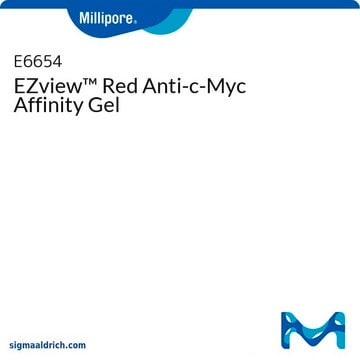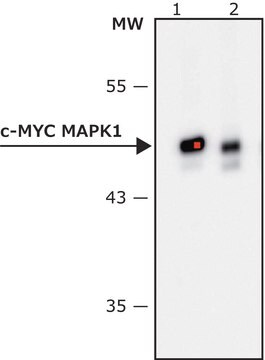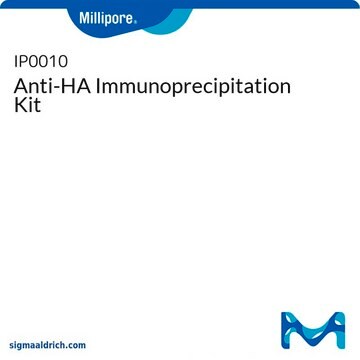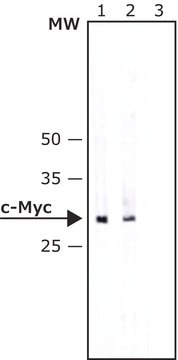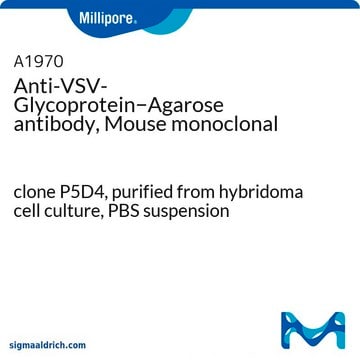A7470
Anti-c-Myc
affinity isolated antibody
Sinónimos:
Anti-c-Myc
About This Item
Productos recomendados
origen biológico
rabbit
conjugado
agarose conjugate
forma del anticuerpo
affinity isolated antibody
tipo de anticuerpo
primary antibodies
clon
polyclonal
reactividad de especies
human
clases químicas de analitos
proteins (c-Myc)
técnicas
affinity chromatography: suitable
immunoprecipitation (IP): suitable
capacidad
≥10 nmol/mL binding capacity (c-Myc tagged fusion protein)
≥7 nmol/mL elution capacity (c-Myc tagged fusion protein)
Nº de acceso UniProt
temp. de almacenamiento
2-8°C
Información sobre el gen
human ... MYC(4609)
¿Está buscando productos similares? Visita Guía de comparación de productos
Descripción general
Especificidad
Inmunógeno
Aplicación
- chromatin immunoprecipitation (ChIP)
- co-immunoprecipitation
- western blotting
- immunofluorescence
- immunoprecipitation
Acciones bioquímicas o fisiológicas
Forma física
Almacenamiento y estabilidad
Cláusula de descargo de responsabilidad
Not finding the right product?
Try our Herramienta de selección de productos.
Producto relacionado
Código de clase de almacenamiento
11 - Combustible Solids
Clase de riesgo para el agua (WGK)
WGK 1
Punto de inflamabilidad (°F)
Not applicable
Punto de inflamabilidad (°C)
Not applicable
Certificados de análisis (COA)
Busque Certificados de análisis (COA) introduciendo el número de lote del producto. Los números de lote se encuentran en la etiqueta del producto después de las palabras «Lot» o «Batch»
¿Ya tiene este producto?
Encuentre la documentación para los productos que ha comprado recientemente en la Biblioteca de documentos.
Los clientes también vieron
Nuestro equipo de científicos tiene experiencia en todas las áreas de investigación: Ciencias de la vida, Ciencia de los materiales, Síntesis química, Cromatografía, Analítica y muchas otras.
Póngase en contacto con el Servicio técnico
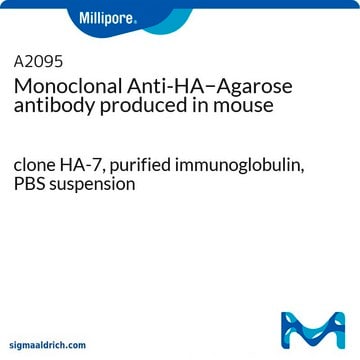




![[Asn670, Leu671]-Amyloid β/A4 Precursor Protein 770 Fragment 667-676 trifluoroacetate salt ≥95% (HPLC), solid](/deepweb/assets/sigmaaldrich/product/images/296/089/259ad19e-25e1-4604-9077-8d4dbea518b6/640/259ad19e-25e1-4604-9077-8d4dbea518b6.jpg)
